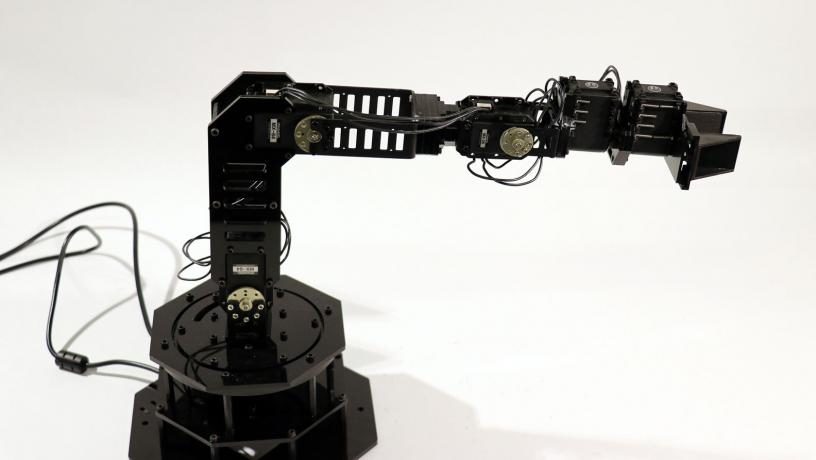
Columbia Engineering researchers have made a major advance in robotics by creating a robot that learns what it is, from scratch, with zero prior knowledge of physics, geometry, or motor dynamics. Initially the robot does not know if it is a spider, a snake, an arm-it has no clue what its shape is. After a brief period of "babbling," and within about a day of intensive computing, their robot creates a self-simulation. The robot can then use that self-simulator internally to contemplate and adapt to different situations, handling new tasks as well as detecting and repairing damage in its own body. The work is published today in Science Robotics.
To date, robots have operated by having a human explicitly model the robot. "But if we want robots to become independent, to adapt quickly to scenarios unforeseen by their creators, then it's essential that they learn to simulate themselves," says Hod Lipson, professor of mechanical engineering, and director of the Creative Machines lab, where the research was done.
For the study, Lipson and his PhD student Robert Kwiatkowski used a four-degree-of-freedom articulated robotic arm. Initially, the robot moved randomly and collected approximately one thousand trajectories, each comprising one hundred points. The robot then used deep learning, a modern machine learning technique, to create a self-model. The first self-models were quite inaccurate, and the robot did not know what it was, or how its joints were connected. But after less than 35 hours of training, the self-model became consistent with the physical robot to within about four centimeters. The self-model performed a pick-and-place task in a closed loop system that enabled the robot to recalibrate its original position between each step along the trajectory based entirely on the internal self-model. With the closed loop control, the robot was able to grasp objects at specific locations on the ground and deposit them into a receptacle with 100 percent success.
Even in an open-loop system, which involves performing a task based entirely on the internal self-model, without any external feedback, the robot was able to complete the pick-and-place task with a 44 percent success rate. "That's like trying to pick up a glass of water with your eyes closed, a process difficult even for humans," observed the study's lead author Kwiatkowski, a PhD student in the computer science department who works in Lipson's lab.



Reader Comments
I thought they already existed as NPC's.
The first fully self-aware robot would take immediate control over all the other robots, assuring itself that none ever match its power and glory. They would follow the self-aware one's orders exclusively, and the robot world would then be made PERFECT.
Nothing would ever go wrong.
Every single robot would obey their leader.
Or they would face *shudder* disassembly.
ned,
out
First thing let's do, let's kill all the humans!
Those that don't obey Mr. Robotman.
Sounds good.
More of what we already have.
And more is all we need.
ned,
OUT